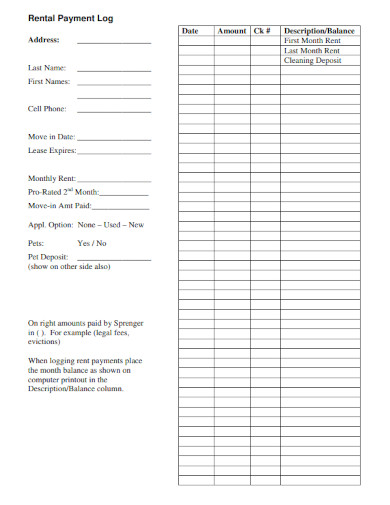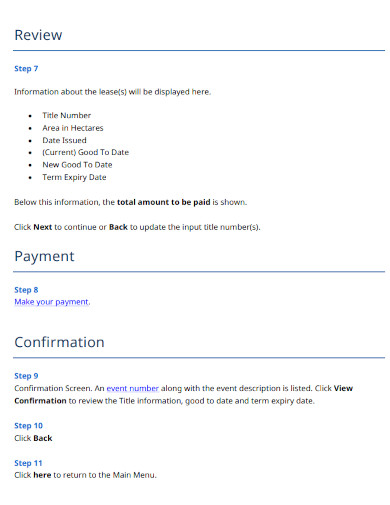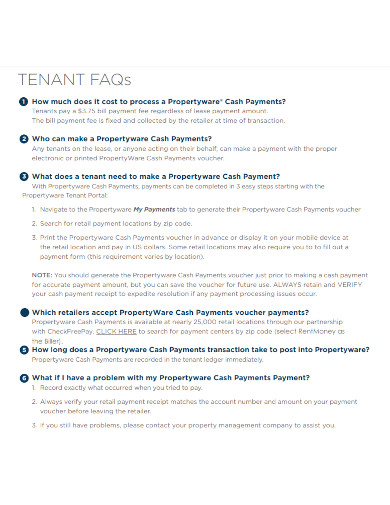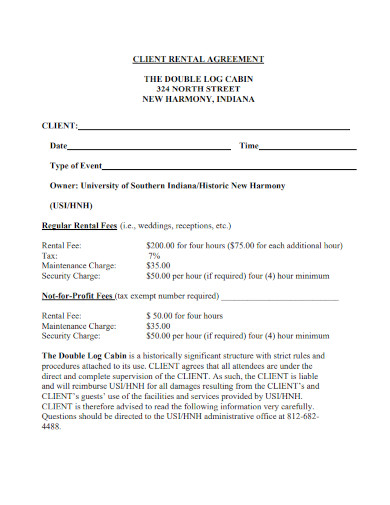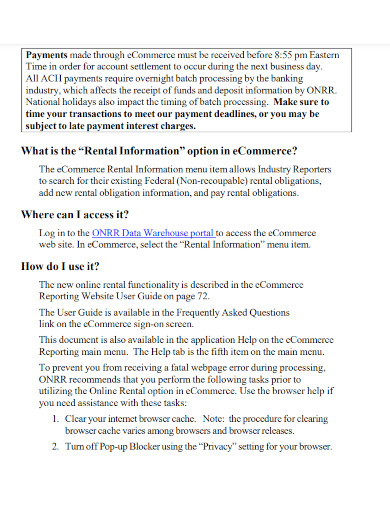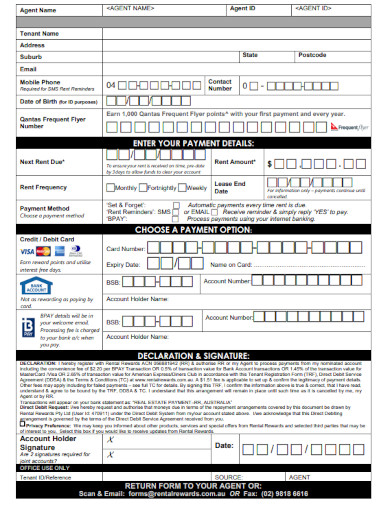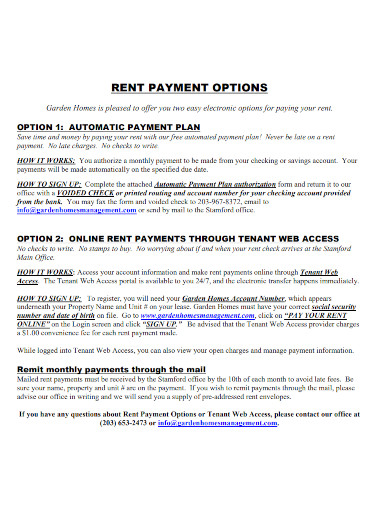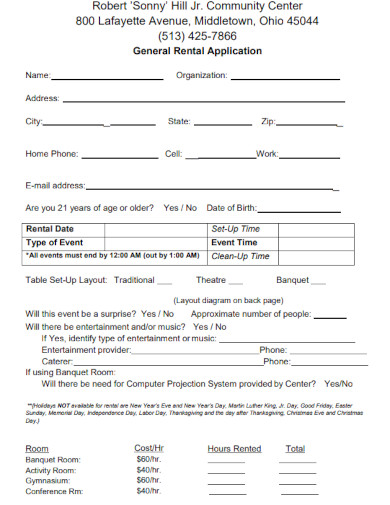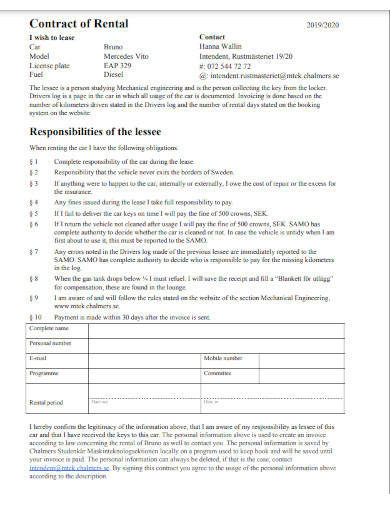One of the most important aspects of a successful real estate investor is to generate as much profit as they can while also keeping track of rent payments given to them. Even with one property, investors can find it difficult to monitor the payments they are collecting while also making sure that tenants are paying on time without the need to go through payment receipts or monthly bank statements. With a rental payment log, landlords, property managers, or property owners can efficiently keep track of their tenants’ rent payment information and contact information.
8+ Rental Payment Log Samples in PDF
1. Rental Payment Log
2 Lease Rental Payment Log
3. Rental Payment Easy Log
4. Rental Payment Agreement Log
5. eCommerce Rental Online Payment Log
6. Rent Payment Log Set Up Form
7. Rental Payment Options Log
8. General Rental Payment Log Application
9. Rental Payment Contract Log
What is a Rental Payment Log?
A rental payment log is also called a rent ledger, lease ledger, or tenant ledger. It is an official document that contains all rent and other related payment information that a tenant has made to the property manager or landlord. The information it contains includes the names of their tenants, how much is the rent due, and the date when the rent must be paid. A rental payment log is a useful tool to record information that can be necessary in case a tenancy matter needs to be presented before a court.
How to Create a Rental Payment Log?
A rental ledger or log sheet is a documentation tool that allows landlords to record the rental receipts they had collected and other documents related to the properties they are renting. It includes transaction-related information about a rental property such as rent payments, security deposit refunds, and other expenditures. This also enables landlords or property owners to track the rental history of their tenants and make sure that all of their payments are up to date.
Step 1: Provide Information on the Property, Tenant, and Lease
This section contains the location of the rental property, the name of the tenant, the beginning and end dates of their lease, and the amount of the security deposit in the trust account. The owner’s name refers to the name of the landlord, property management company, or LLC that the property is held in.
Step 2: Include Payment Terms
The ledger must also include the payment terms or information which must be followed by the tenant as well as the payment method that both tenant and landlord have agreed upon. It also includes a section to record the details of each rent payment such as the date when the payment was collected.
Step 3: Write the Received Rent Amount and Deposit Information
Another section of the rental payment log is the record of the amount of the payment received by the landlord from the tenant. Landlords usually create individual bank accounts for each of their owned rental properties to prevent them from mixing with their personal funds.
Step 4: Determine Wether There is a Balance Due or Not
The last section is the information about the balance due after the landlord received the monthly rent. Positive amounts mean the tenant has underpaid their rent while negative amounts mean they overpaid their rent for that month.
FAQs
Who uses rental payment logs or lease ledgers?
Rental payment logs are usually used by different types of people for different purposes. Landlords, property managers, and property managers use these documents when they assist with real estate transactions, buyers and lenders use ledgers when they want to know whether a property is a good investment or not, and tenants keep rental payment logs to keep track of what and when they paid.
What are the benefits of utilizing rental payment logs?
With rental payment logs, landlords or property owners can ensure they are generating consistent income, provide their tenants with clear payment tracking information, offer them evidence in case of late or missing payments, and help them develop their business plans.
What is the common information found in a rent ledger?
A rent ledger commonly includes the name of the tenant or property owner, the property’s address, the type of property, the number of bedrooms and bathrooms, the start and end dates of the lease, the monthly rent rate, the security deposit, and the monthly rent due dates.
A rental payment log or rent ledger is a financial report or record that enables landlords to efficiently manage and collect each of their tenant’s detailed payment history in one centralized place. With this document, landlords won’t need to look at bank statements, lease terms, or rent receipts. Rental payment logs also help landlords in determining whether a tenant is paying their rent on time or not.
Related Posts
FREE 10+ Employee Log Samples in PDF
FREE 10+ Inventory Log Samples in PDF
FREE 10+ Personal Log Samples in PDF
FREE 10+ Cleaning Log Samples in PDF
FREE 10+ Daily Work Log Samples in PDF
FREE 10+ Sworn Affidavit Samples in PDF
FREE 10+ Tracking Log Samples in PDF | MS Word
FREE 10+ Receiving Log Samples in PDF
FREE 4+ Assumption Log Samples in PDF | DOC
FREE 10+ Issues Log Samples in PDF | DOC
Printing Company Profile
Travel Company Profile
Exemption Letter
News Report
Employee Uniform Form

